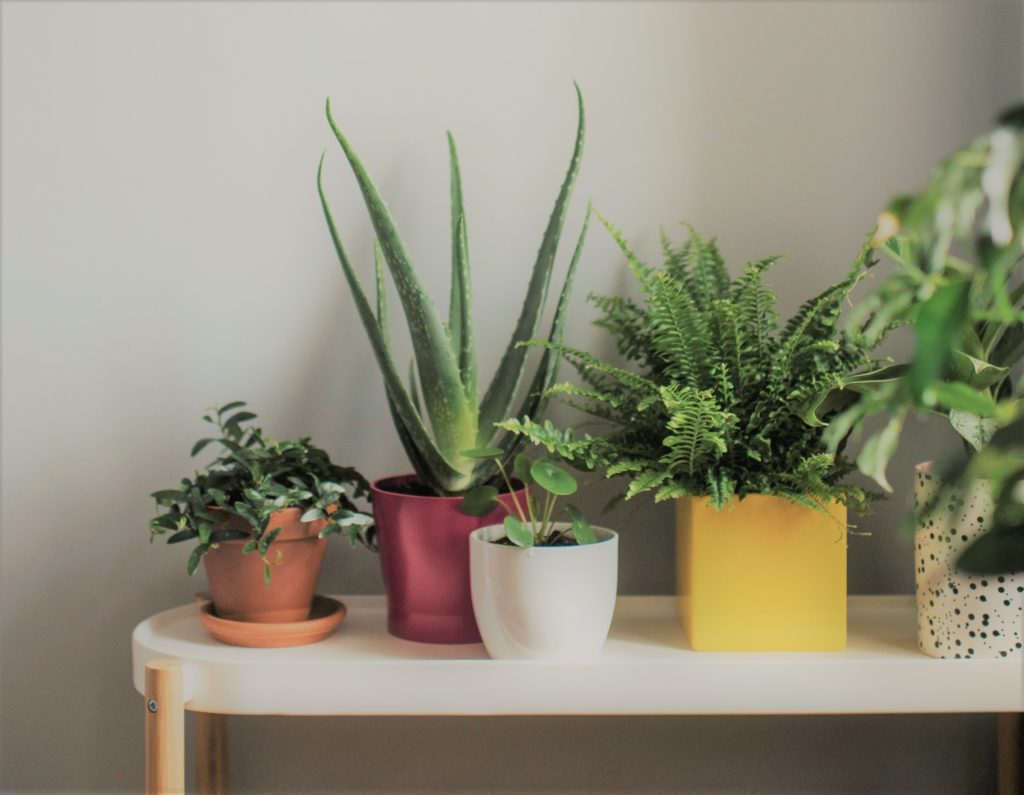Many people today spend the majority of their time indoors, whether by choice or not. And, unfortunately, the air in our homes (and even office buildings) can be toxic to our health. But there is a simple solution: houseplants! Yes, houseplants help create a welcoming and cozy environment in your home or office. But that’s not the only thing they’re good for. They can also improve indoor air quality. Why? Well, believe it or not, plants help remove toxins.
But, how?
NASA conducted a study on the ability for plants to improve indoor air quality and you’ll never guess what they discovered. They determined that plants can have a significant positive impact on the quality of indoor air. That’s right! Plants help remove many harmful chemicals from indoor air. We’re talking things like VOCs, formaldehyde, benzene, etc. These harmful chemicals are found in many household products. They’re connected to various short- and long-term health concerns, from “simple” issues like headaches and coughing all the way to cancer.
Have we really even improved?
Homes built within the last decade or two have come a long way in reducing the use of certain toxic products. However, even the most modern home can be a great threat to your health. We may have gotten away from lead paint and asbestos, but we’ve replaced those concerning items with things like stain resistant carpet and furniture, synthetic materials, paint (it’s still toxic even though lead-free), and energy efficiency. Yes, just think about it. The more air-tight we make our homes in the effort to make them more energy efficient, the most we trap all those hidden toxins inside. So many of the changes that we’ve seen in terms of designing or maintaining a home, while more convenient, are toxic to our health. So that begs the question, “have we really even improved?”
In addition to removing chemicals from the air, plants can also help kill viruses. Is your mind blown yet?! The NASA study referenced above reported that “plant roots and their associated microorganisms destroy pathogenic viruses, bacteria, and organic chemicals, eventually converting all of these air pollutants into new plant tissue.” What?!
The 15 best plants for your home
Below you will find a list of plants that have been shown to help clean the air by removing toxins.
- Snake Plant (aka Mother-in-Law’s tongue…does that make you giggle too?) – a succulent that grows in bright shade and requires only one watering per week. It can survive tough conditions including a variety of temperatures and light conditions. Just don’t over-water it…or not water it at all!
- Peace Lily – is drought-tolerant, but does best when watered weekly. I can attest to the fact that it’s hard to kill! It has beautiful white flowers. While larger varieties can be found, it is generally found in a size that fits nicely on a tabletop. It can be mildly toxic to humans and pets, so it’s best to wash your hands after touching.
- Spider Plant – a hanging plant that likes to branch out. It’s an excellent choice for brightening up a corner, spreading out over a cabinet or mantel. It likes bright, indirect light and does not like soggy soil.
- Parlor Palm – originates in tropical areas, so it likes high humidity, well-drained soil, and requires warmer temps (above 60 degrees). It can tolerate low light conditions. It typically grows to about 4 feet, but can reach up to 8 in ideal conditions. The desktop variety reaches 1 foot tall.
- Corn Plant – this plant requires low light, but it cannot handle warmer temps (never higher than 90 degrees). That makes it a perfect indoor plant! It’s a tall growing plant with green and yellow foliage that is often used to fill room corners.
- English Ivy – this well-known plant is beautiful both outdoors and indoors, can grow in full shade to full sun, and can be trained into shapes, so it’s great for any area in your home. Looks great as a hanging plant, but could also work if allowed to spread out on a surface. Bonus: it’s likely to survive for several years!
- Chinese Evergreen – this plant is easy to care for and thrives in low to medium light. It generally grows one or two feet tall. It’s a great option if you’re wanting to add a pop of color due to its bright green and pink leaves. Please note it can be toxic to pets.
- Dragon Tree – an beautiful plant with sword-like leaves with red or purple edges. It’s easy to care for, drought-tolerant, and nearly indestructible. It can tolerate low light, but prefers full sun or partial shade. When kept pruned it will grow to about 6 feet or less.
- Rubber Tree – a great starter plant for those lacking a green thumb. It has large, glossy, leathery leaves and should be grown in well-drained potting soil, watered regularly, and receive liquid fertilizer when actively growing. It loves bright light, but can adjust to lower light levels. It does not like sudden drops in temperature, so keep it away from drafty windows. Indoors it will usually only grow to about 6-10 feet, and will last about 15 years or more with proper care.
- Lemon Button Fern – grows about a foot high and thrives in indirect light as long as it has sufficient humidity. They tolerate drought better than most ferns, so it’s best to let their soil dry out slightly before watering.
- Pothos – a vining tropical plant that will tolerate low light, but it might make their leaves turn solid green. Works great in a hanging basket or container where it can hang over the edge.
- Philodendron – comes in a variety of sizes and colors and its leaves can have many different shapes depending on the variety. It adapts easily to most homes with medium to bright, indirect light.
- Aloe Vera – a succulent that is easy to grow, but needs a sunny spot. Grow in a cactus potting mix or add perlite or sand to a regular potting mix to improve drainage. As a bonus, the gel from inside can be used to treat minor burns.
- Fittonia ‘Frankie’ (aka Nerve Plants) – a low-maintenance plant that has pink and green leaves (other varieties have white and green or green and red). It will grow to about 3-6 inches high, so it’s great for terrariums and dish gardens. Requires high humidity, moist, well-drained soil, and bright, indirect sunlight.
- Flamingo Lily – an evergreen plant, known for its colorful flowers. Needs bright, indirect light and high humidity, so you’ll want to mist it regularly and keep its soil moist (but not soggy).
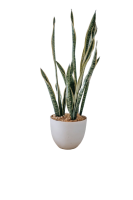

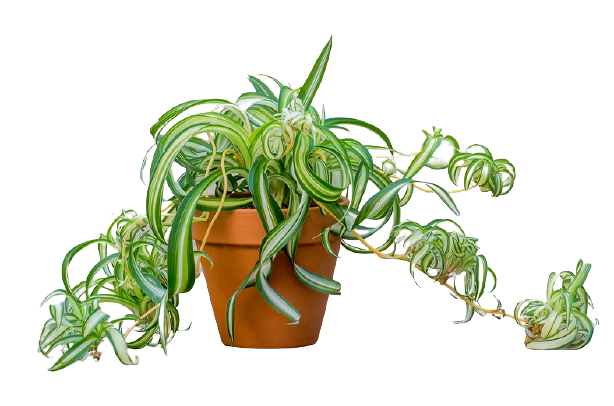
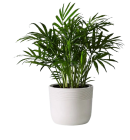


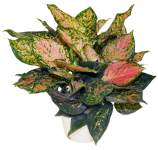
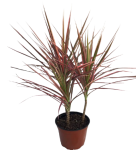

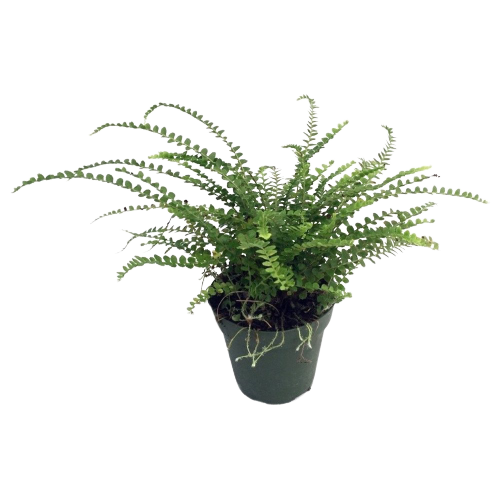


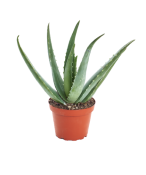
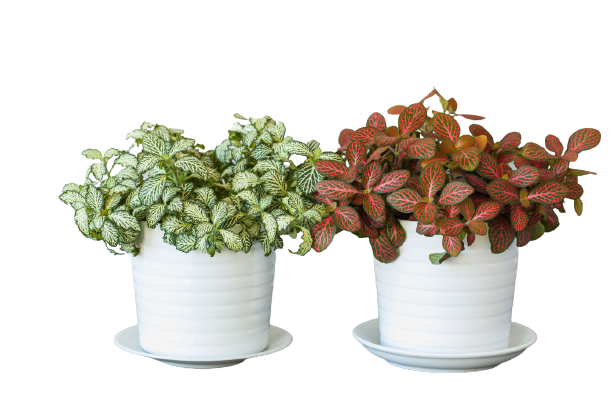
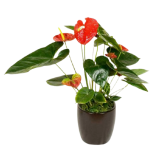
Things to consider
If you have children or pets, you’ll want to take note of which plants can be potentially dangerous to their health. The Humane Society has a complete list on its website of plants to take caution with. It may not be completely exhaustive, so always search your planned plant purchases and their potential risks to your children or pets before shopping.
While plants are not the end-all solution to a healthy home environment, they can definitely help provide you with a natural, safe, and eco-friendly way of detoxifying your living and work spaces. And, I don’t know about you, but they just make me happy!
For additional tips on how to improve the indoor air quality of your home (or office space) check out Body Burden: What – Why – How and look at the other ideas under body burden through inhalation.
Pick your plant
As I always say, start small. I wouldn’t recommend going from zero plants to 15. The likelihood of them all surviving is probably slim! But pick one or two of the above, get them in your home, and start reaping the benefits. Make sure the download the free guide: 15 best plants for an easy visual reference while you’re shopping!
Related posts:
- How Breathing Could Harm Your Health Under normal circumstances, many people are indoors 80% of the time. Over the past year and a half…I’d say it’s fair to assume that percentage is even higher. Our homes...
- Gut Health: The Shocking Truth A healthy gut is foundational to a healthy you. The human gut does more than just digest food and absorb nutrients. There's a reason it's called the second brain. Your...
- 11 Better-than-Melatonin Tips for Quality Sleep A good night’s sleep is actually just as important as regular exercise and a healthy diet? And, while many turn to melatonin to support a good night's sleep, there are...
- Healthy Baking Substitutes Baked goods are so yummy, but they can be filled with ingredients that lack nutritional value, that can cause inflammation or disrupt the function of a healthy gut. But it...

